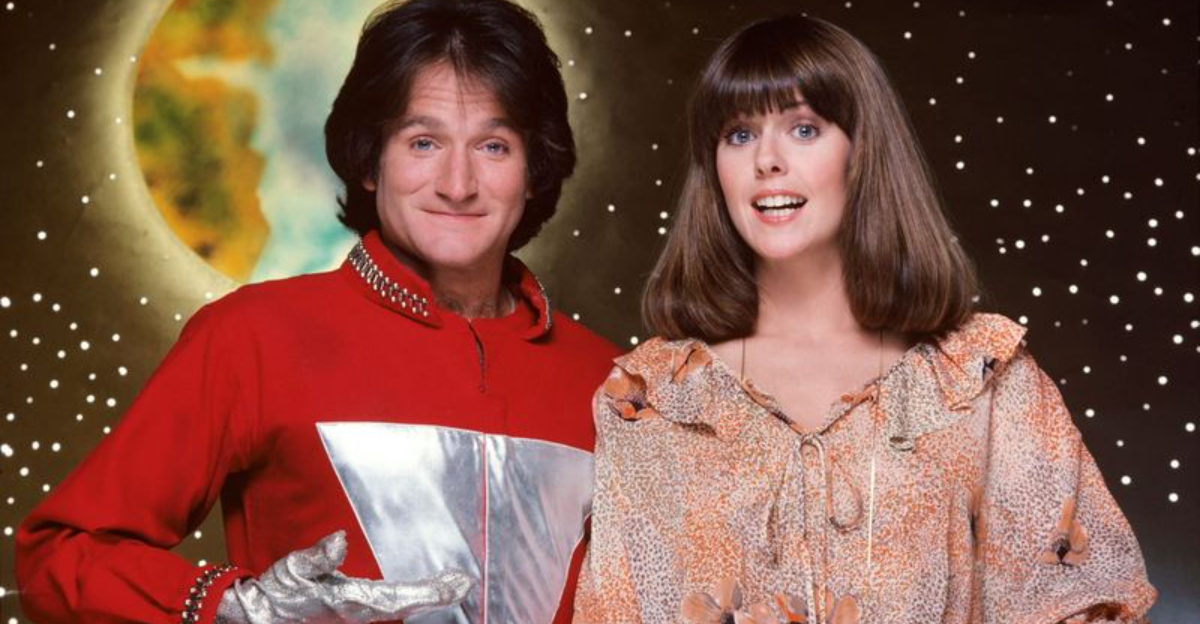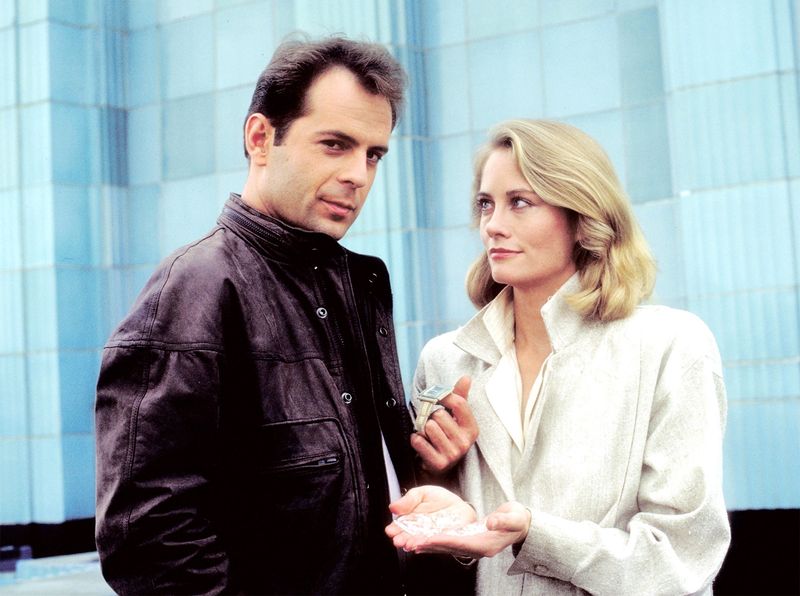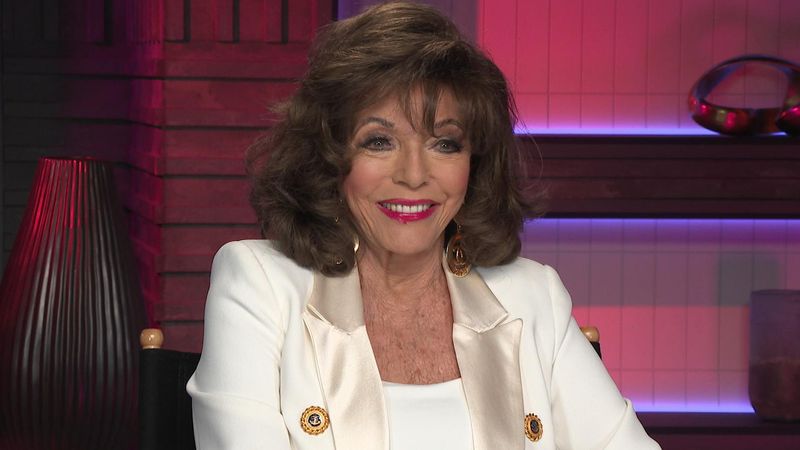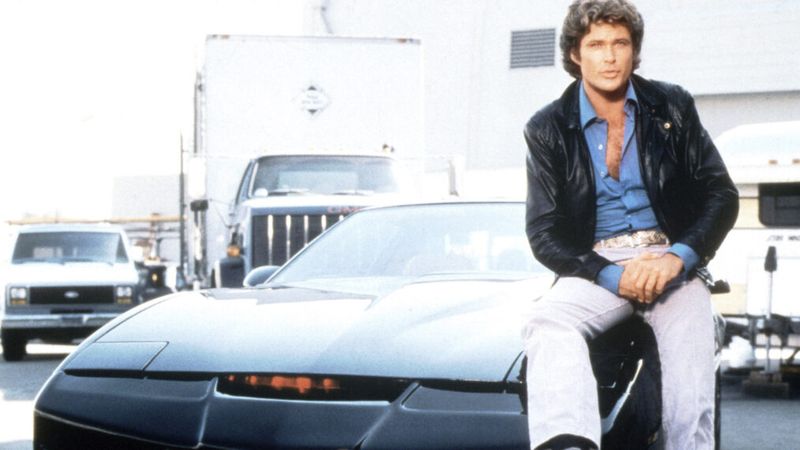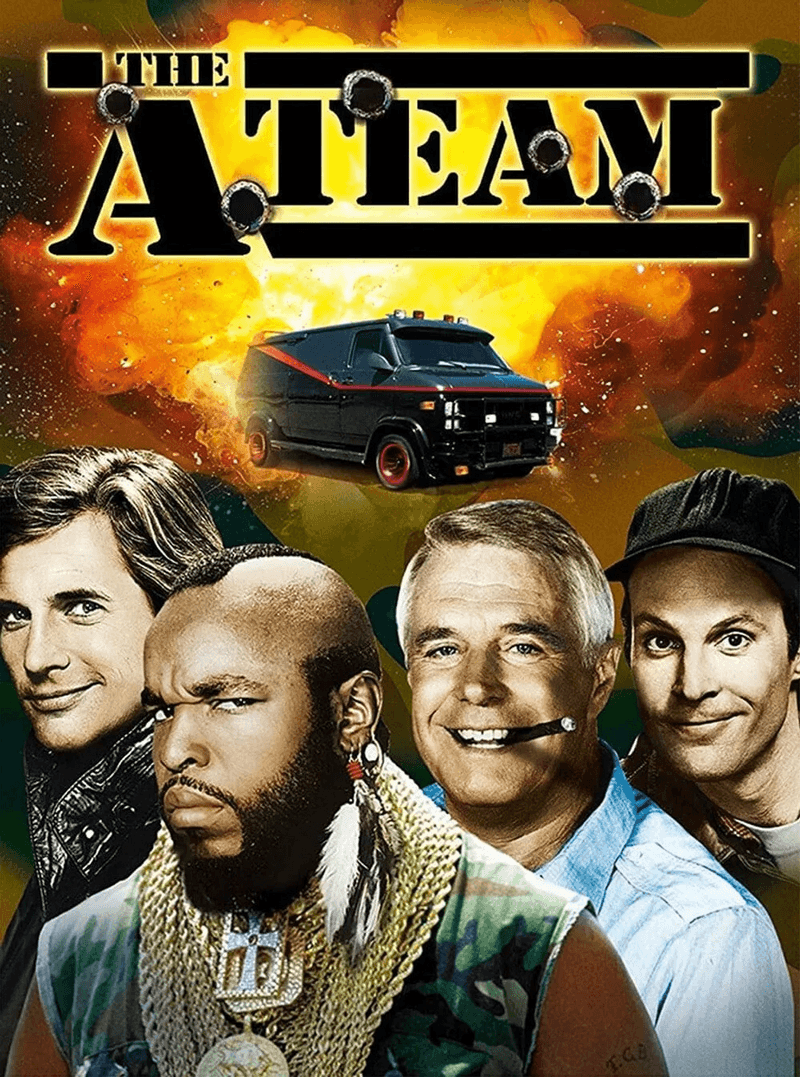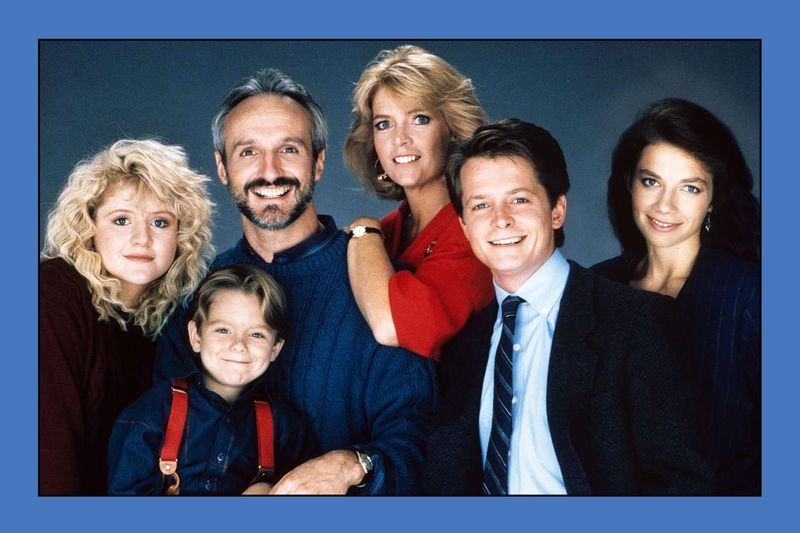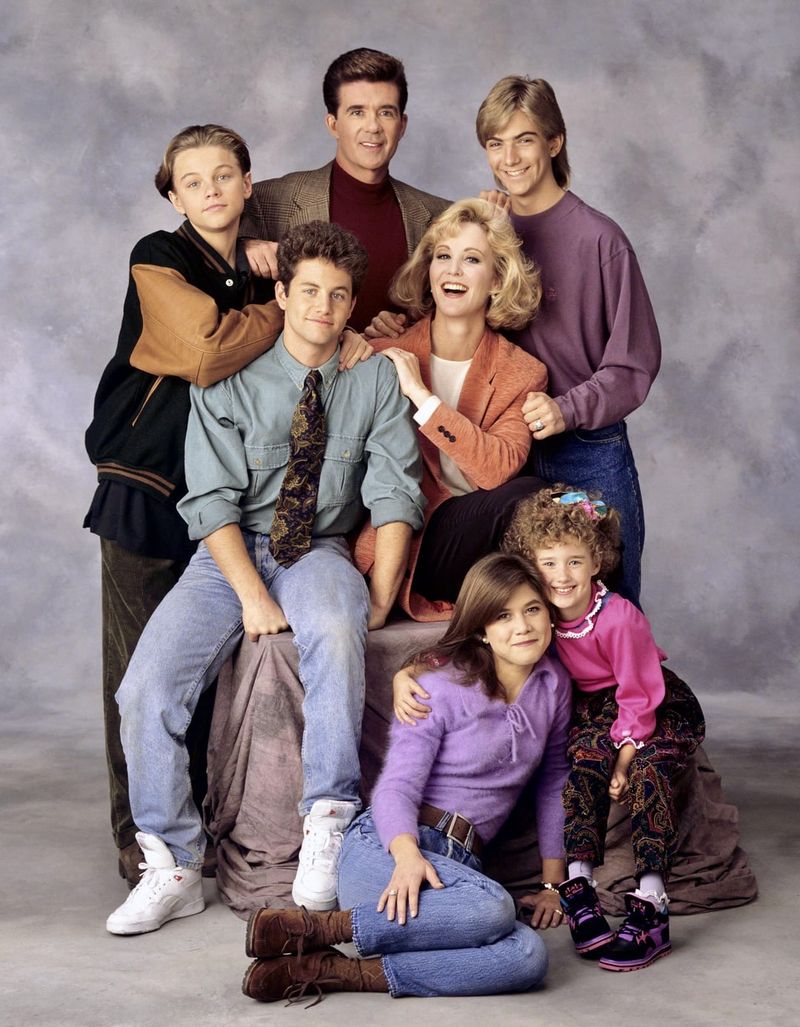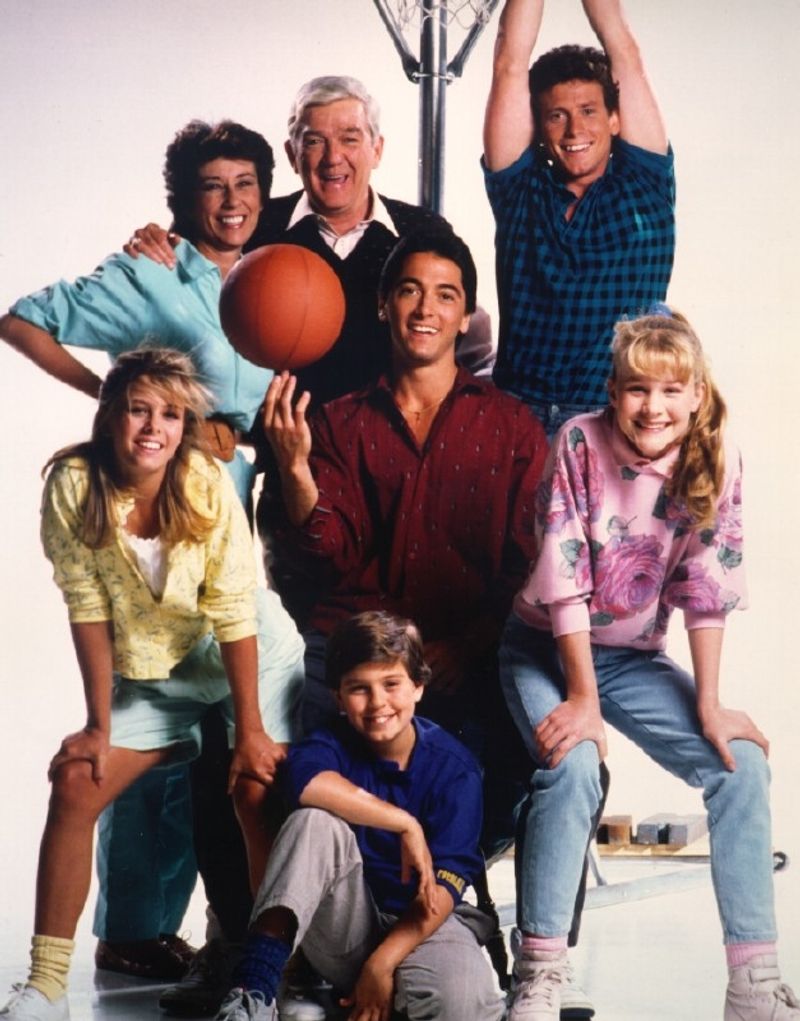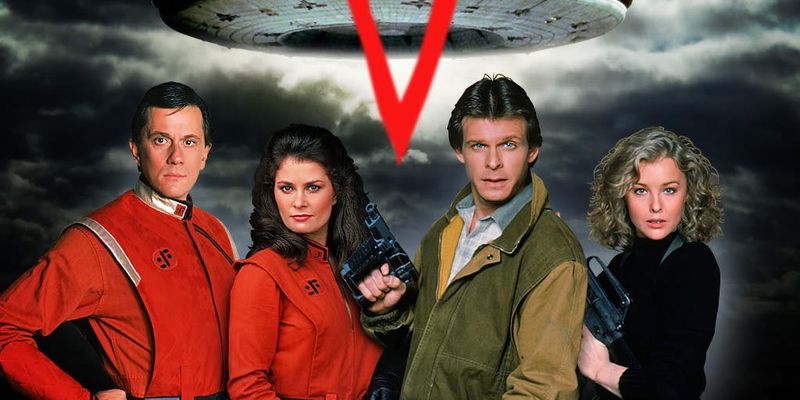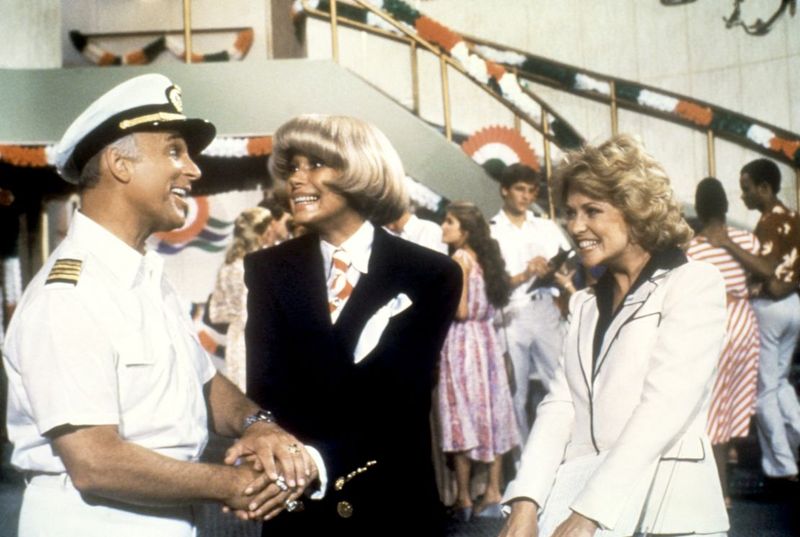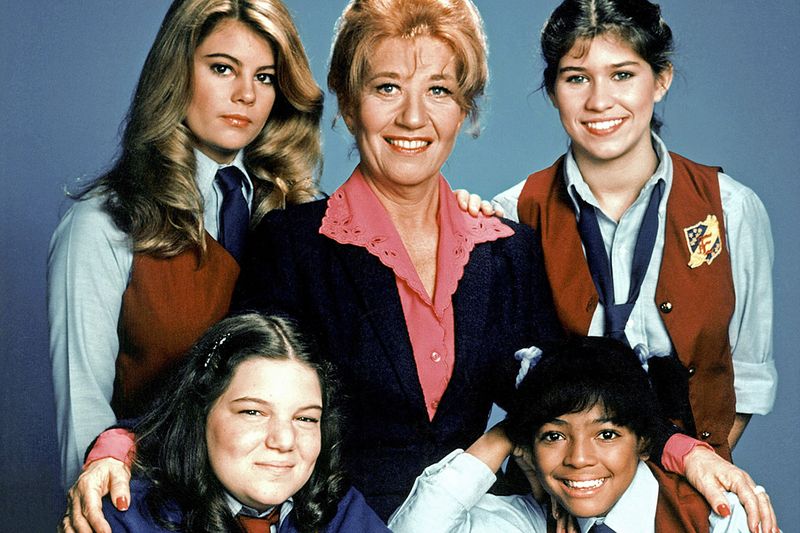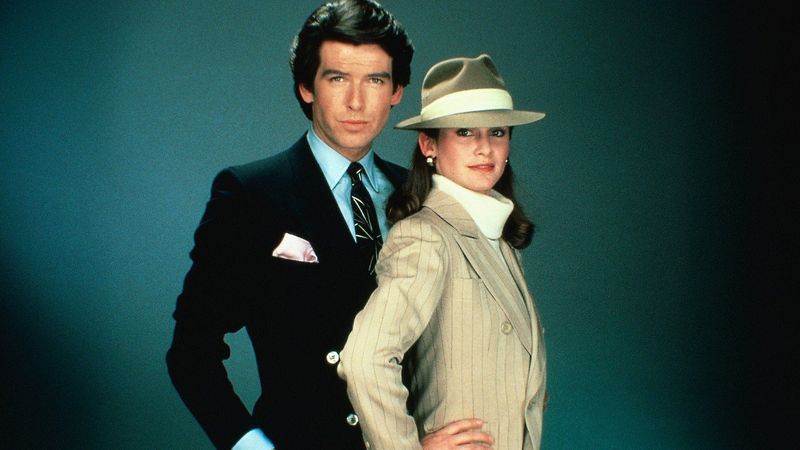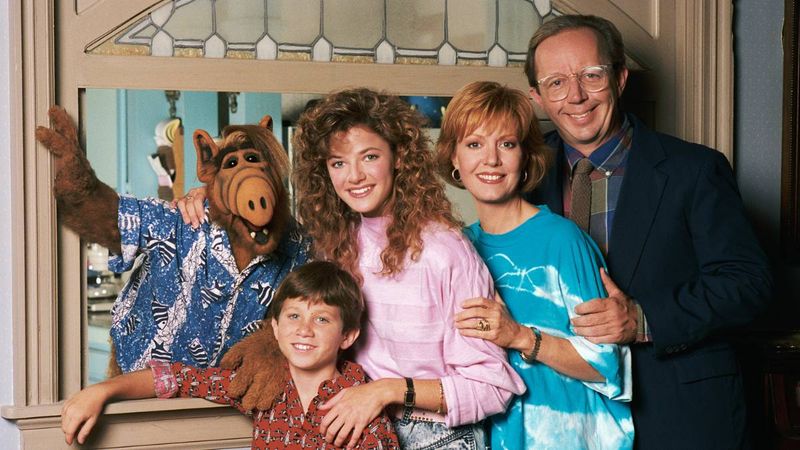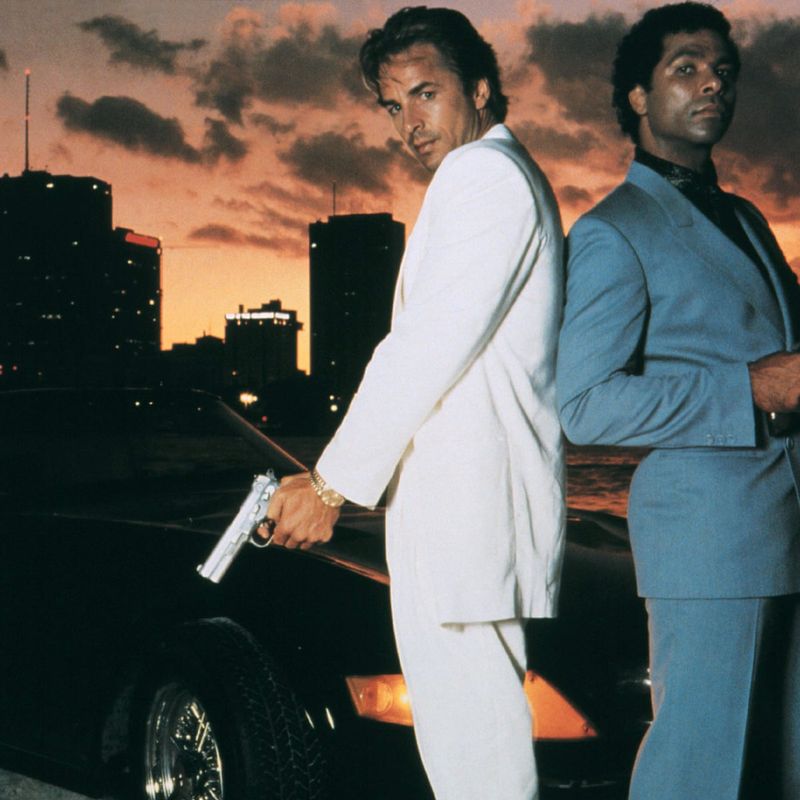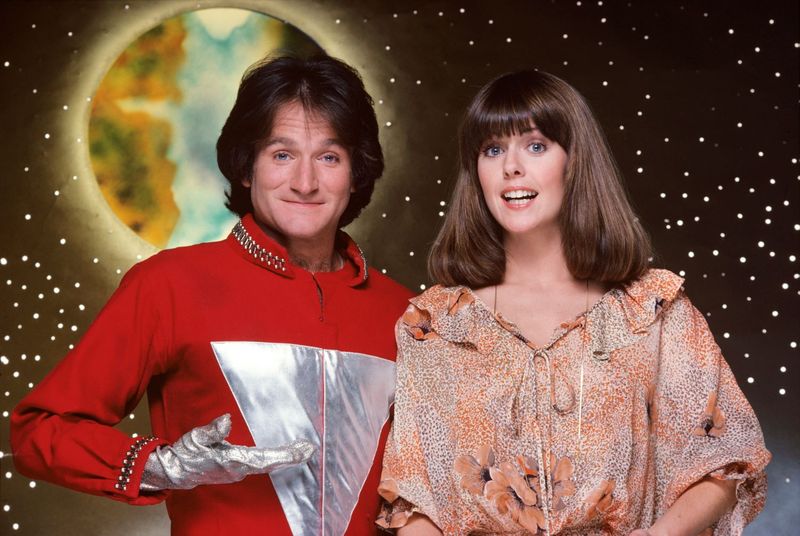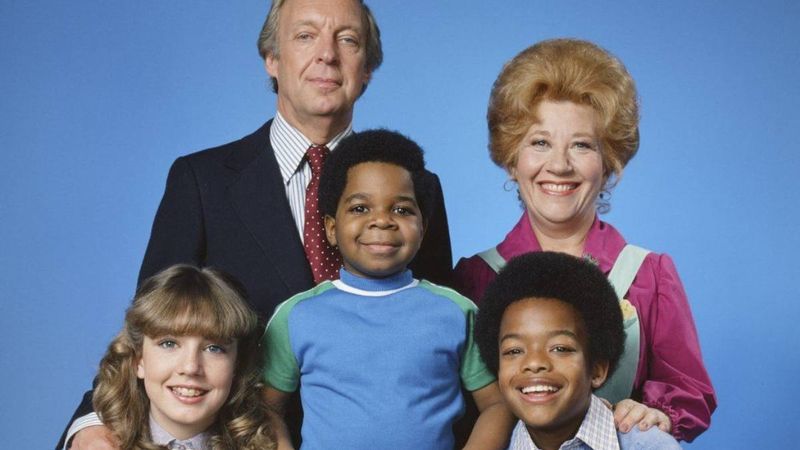Remember when you couldn’t wait for your favorite ’80s show to air each week? Those first seasons had us glued to our TVs with fresh concepts, charismatic casts, and storylines that kept us coming back.
But something strange happened to many of these beloved series – they gradually lost what made them special.
From behind-the-scenes drama to desperate plot twists, these once-brilliant shows eventually jumped the shark in spectacular fashion.
1. Moonlighting (1985-1989): When Stars Collide
Crackling with electric chemistry between Cybill Shepherd and Bruce Willis, Moonlighting revolutionized TV with its fourth-wall-breaking humor and witty banter. The Blue Moon Detective Agency cases were merely backdrops for the will-they-won’t-they tension that kept viewers obsessed.
Then paradise crumbled. Real-life tensions between the stars led to separate filming schedules. Episodes aired irregularly, sometimes months apart. The infamous consummation of their relationship killed the romantic tension.
By the final season, Shepherd and Willis barely appeared together, with bizarre storylines involving dream sequences and fantasy episodes replacing the smart detective work and snappy dialogue that made the show special.
2. Dynasty (1981-1989): From Power Struggles to Alien Encounters
Glamour, wealth, and delicious backstabbing made Dynasty the ultimate ’80s guilty pleasure. The Carrington family’s sophisticated power plays captivated America, with Joan Collins’ Alexis delivering iconic catfights and scheming that defined a decade of television.
Then came the notorious Moldavian massacre cliffhanger where terrorists gunned down the entire cast at a wedding. Most characters mysteriously survived, straining credibility beyond repair.
Later seasons introduced bizarre elements like alien abductions, long-lost evil twins, and increasingly outlandish fashion. The once-sharp writing became a parody of itself, with ratings plummeting as core viewers abandoned the bloated cast and ridiculous plotlines.
3. Knight Rider (1982-1986): When KITT Lost Its Cool
A talking car and a leather-jacketed crime fighter created pure television magic. David Hasselhoff as Michael Knight paired with KITT, the AI-powered Trans Am, delivered the perfect blend of action, humor, and cutting-edge (for the ’80s) technology that captured our imaginations.
The show’s initial seasons balanced character development with exciting missions. KITT’s personality and capabilities felt genuinely revolutionary.
Unfortunately, later seasons resorted to gimmicky KITT upgrades like “Super Pursuit Mode” that felt desperate rather than innovative. Storylines became repetitive – how many times could Michael be framed for a crime? Villains grew cartoonish, and by the final season, the once-groundbreaking concept had run out of gas.
4. The A-Team (1983-1987): When the Formula Wore Thin
Four Vietnam vets on the run from the military while helping the innocent created an irresistible premise. Mr. T’s mohawk, Murdock’s crazy antics, Face’s smooth-talking cons, and Hannibal’s strategic mind made for a perfect ensemble that kids and adults equally adored.
Early seasons balanced exciting action with genuine character moments. The team’s creative solutions to problems using whatever materials were at hand became the show’s trademark.
By season four, the formula had calcified into predictability. Despite hundreds of bullets flying in every episode, nobody ever got seriously hurt. The military pursuers became increasingly incompetent. A fifth season attempt to have them work for the government came too late to save a show that had lost its urgency and edge.
5. Family Ties (1982-1989): Alex P. Keaton Takes Over
The brilliant concept of ex-hippie parents raising a Reagan-loving Republican son created fertile ground for comedy gold. The Keaton family dynamics reflected America’s generational divide with warmth and wit that transcended political differences.
Michael J. Fox’s Alex quickly became the breakout star, his charisma and timing making even his materialistic character lovable. The show balanced his conservative views against his parents’ liberalism while giving meaningful stories to siblings Mallory and Jennifer.
Fox’s rising fame disrupted this balance. As Back to the Future made him a superstar, the show increasingly centered on Alex at the expense of other characters. Later seasons introduced a new baby, cousin, and increasingly melodramatic storylines that strayed from the show’s strengths into saccharine territory.
6. Growing Pains (1985-1992): The DiCaprio Desperation
The Seaver family captured the essence of ’80s suburban life with relatable humor and genuine heart. Alan Thicke’s psychiatrist dad working from home while Joanna Kerns’ reporter mom returned to work offered a progressive family dynamic, with Kirk Cameron’s Mike as the lovable troublemaker.
The show excelled at balancing comedy with thoughtful discussions of teen issues. Early seasons maintained a perfect equilibrium between laughs and life lessons without becoming preachy.
As ratings declined, desperate measures followed. Adding a cute new baby didn’t help. The most notorious Hail Mary came when they introduced a young Leonardo DiCaprio as a homeless teen the family adopts. By then, Cameron’s religious conversion had created behind-the-scenes tensions, and the once-authentic family comedy had become an unrecognizable shadow of its former self.
7. Charles in Charge (1984-1990): New Family, Same Problems
Scott Baio charmed audiences as college student Charles, working as a male nanny for the Pembroke family. The show’s first season offered a fresh perspective on family dynamics and gender roles, with Charles navigating college life while managing household responsibilities.
Then came television’s most jarring reset button. After cancellation and revival in syndication, Charles inexplicably moved in with an entirely new family (the Powells) in the same house! No explanation was offered for the complete cast overhaul.
The syndicated version leaned into cheesier plotlines and more obvious humor. Charles’ relationship with new family member Nicole became increasingly uncomfortable as she developed an obvious crush on him. The writing quality plummeted, with episodes focusing more on wacky situations than the character development that initially made the show endearing.
8. V: The Series (1984-1985): Lizard People Lose Their Bite
The original V miniseries brilliantly reimagined alien invasion as a Nazi allegory. Reptilian aliens disguised as humans arrived offering friendship while secretly planning to harvest humanity for food. The resistance fighters represented everyday heroes standing against fascism.
When NBC expanded it into a weekly series, the budget couldn’t sustain the ambitious concept. Expensive special effects became rare, with fewer reveals of the aliens’ true reptilian nature.
Most damaging was the shift from political allegory to standard action fare. The resistance fighters became stock characters in routine shootouts. Scientific concepts grew increasingly absurd, like a half-human/half-alien baby that aged to adulthood in days. By the time the show was mercifully canceled after one season, the thought-provoking premise had devolved into campy sci-fi nonsense.
9. The Love Boat (1977-1987): When the Ship Started Sinking
Captain Stubing and crew sailed into our hearts with their weekly tales of romance and comedy on the high seas. The anthology format brilliantly showcased a revolving door of guest stars experiencing love and misadventures while the ship’s crew provided comforting continuity.
Early seasons captured the glamour of cruise vacations when they were still considered exotic luxury experiences. The formula worked perfectly: three interwoven stories per episode, ranging from heartwarming to hilarious.
By the mid-’80s, the concept had exhausted itself. Stories became recycled and predictable. Desperate for fresh angles, later seasons added mermaid episodes and bizarre fantasy sequences. Even cast changes couldn’t revitalize the series as real-world cruising became commonplace, stripping the show of its escapist appeal and leaving it stranded in a sea of repetitive storylines.
10. The Facts of Life (1979-1988): Growing Up Is Hard To Do
Mrs. Garrett guiding a group of girls at Eastland School created the perfect setup for exploring meaningful teen issues. The core quartet of Blair, Jo, Natalie, and Tootie represented different personalities and backgrounds, allowing the show to address class differences, peer pressure, and growing pains with surprising depth.
Early seasons tackled serious topics like drugs, eating disorders, and teen sexuality with sensitivity rare for the era. The girls’ distinct personalities played off each other beautifully.
As the girls aged, the show struggled to evolve. Moving them into a bakery business strained credibility. Later seasons saw them running a novelty shop called “Over Our Heads” – an apt metaphor for the show’s increasingly implausible scenarios. By the final seasons, the once-groundbreaking series had abandoned its thoughtful roots for sitcom clichés.
11. Remington Steele (1982-1987): The Bond Curse
Female detective Laura Holt invents a fictional male boss to attract clients, then must cope when a charming con man assumes that identity. This brilliant premise combined mystery-solving with romantic tension between Stephanie Zimbalist and Pierce Brosnan, whose chemistry sizzled amid clever cases.
The show balanced procedural elements with the ongoing question of Steele’s true identity. Its meta-humor about detective fiction tropes felt decades ahead of its time.
Behind-the-scenes drama ultimately derailed the series. NBC initially canceled it after four seasons, freeing Brosnan to become James Bond. When his casting made headlines, NBC spitefully renewed the show, forcing him to decline Bond. The hastily-produced fifth season featured a reduced episode order, bizarre international storylines, and visibly unhappy stars before the show mercifully ended.
12. ALF (1986-1990): The Alien Life Form Overstays His Welcome
A furry alien crash-lands in suburbia and moves in with the Tanner family. ALF’s sardonic humor and cat-eating tendencies contrasted hilariously with the ordinary family hiding him from authorities. The puppet character became a cultural phenomenon, with catchphrases and merchandise everywhere.
Early seasons balanced ALF’s sarcastic one-liners with genuine moments showing his growing attachment to the family. The show cleverly used his outsider perspective to comment on human behavior.
As seasons progressed, the premise grew stale. The family seemed increasingly annoyed by ALF rather than charmed. Production was notoriously difficult, with the technical requirements of the puppet making filming a nightmare for the human cast. The series infamously ended on an unresolved cliffhanger with ALF captured by the government – a surprisingly dark conclusion for a family sitcom.
13. Miami Vice (1984-1989): Style Over Substance
Pastel suits, no socks, and Ferrari Testarossas revolutionized television aesthetics. Don Johnson and Philip Michael Thomas as detectives Crockett and Tubbs brought unprecedented style to crime drama, with MTV-influenced visuals and contemporary music creating a show that looked and sounded like nothing else on television.
Early seasons balanced the revolutionary presentation with gritty stories about the dark side of Miami’s glitz. The contrast between neon lights and moral darkness gave the show substance beneath its stylish surface.
Later seasons couldn’t maintain this balance. The distinctive visual style became less special as other shows copied it. Storylines grew increasingly outlandish, with bizarre supernatural elements and over-the-top villains. By the final season, even the once-groundbreaking music choices felt like self-parody, and the edgy crime drama had devolved into a pastel-colored cartoon.
14. Mork & Mindy (1978-1982): Even Robin Williams Couldn’t Save It
Robin Williams’ improvisational genius as alien Mork from Ork created comedy gold. His weekly reports to his unseen superior Orson about Earth’s peculiarities provided the perfect showcase for Williams’ manic energy and physical comedy, while Pam Dawber’s Mindy grounded the show with relatable humanity.
The first season’s fish-out-of-water premise worked beautifully. Williams had freedom to improvise while the writers built a sweet relationship between the characters.
Network meddling soon derailed everything. Moving from its successful Thursday timeslot killed ratings. Adding unnecessary characters diluted the core relationship. The bizarre final season featured Mork and Mindy marrying and having a child – Jonathan Winters playing a middle-aged man in a baby’s body who aged backward. Even Williams’ brilliance couldn’t salvage such a preposterous concept.
15. Diff’rent Strokes (1978-1986): What’chu Talkin’ ‘Bout, Final Seasons?
The premise was revolutionary: wealthy white widower Philip Drummond adopts two Black boys from Harlem after their mother dies. Gary Coleman’s Arnold became a cultural phenomenon with his catchphrase “What’chu talkin’ ’bout, Willis?” while the show boldly addressed racism and class differences through a family lens.
Early seasons balanced humor with thoughtful exploration of social issues. The show wasn’t afraid to tackle serious topics like drug use, kidnapping, and pedophilia in special episodes that remained sensitive while informative.
As the cast aged, the cute factor diminished. Coleman’s growth was stunted by medical conditions, creating awkward storylines for a teenager who still looked like a child. The final season’s move to ABC brought cast changes and increasingly desperate plots, ending a once-groundbreaking show on a whimper rather than the social impact it once commanded.
